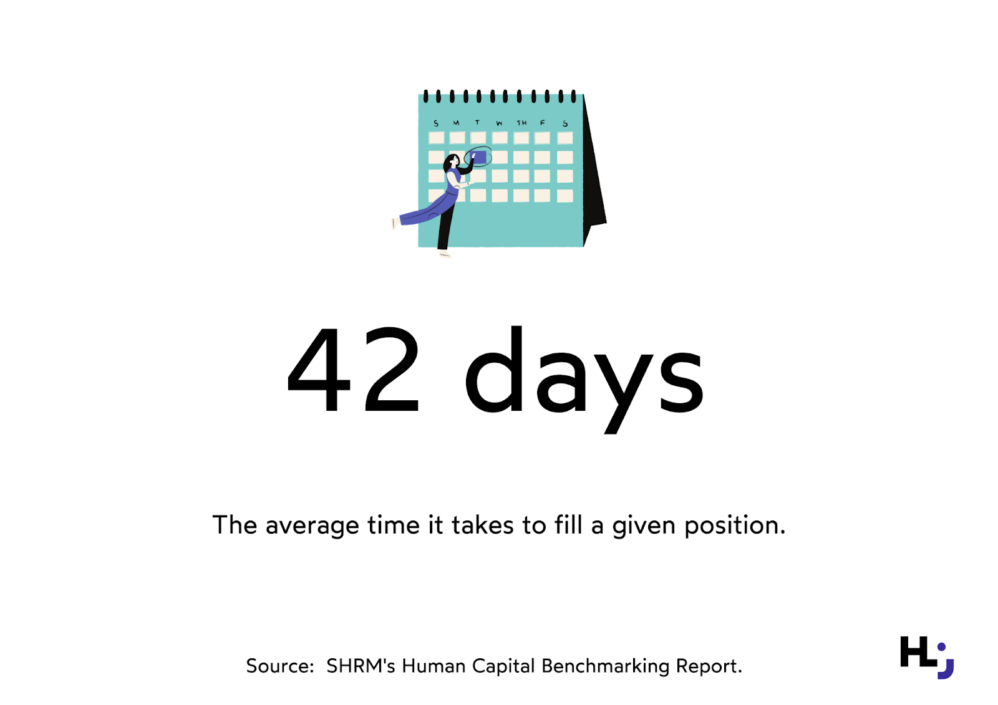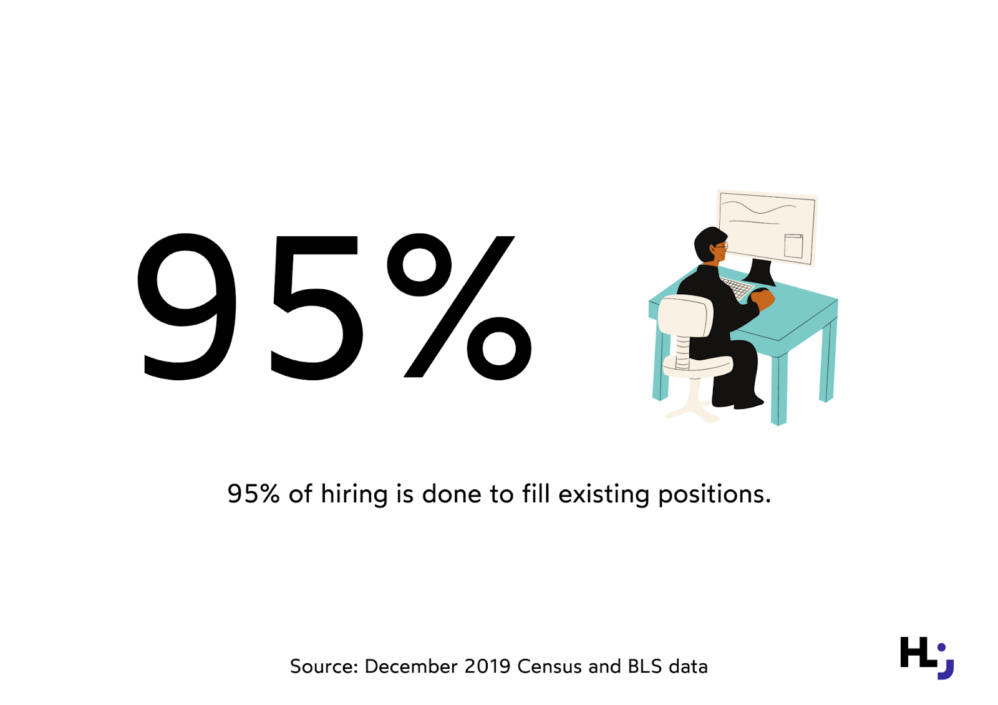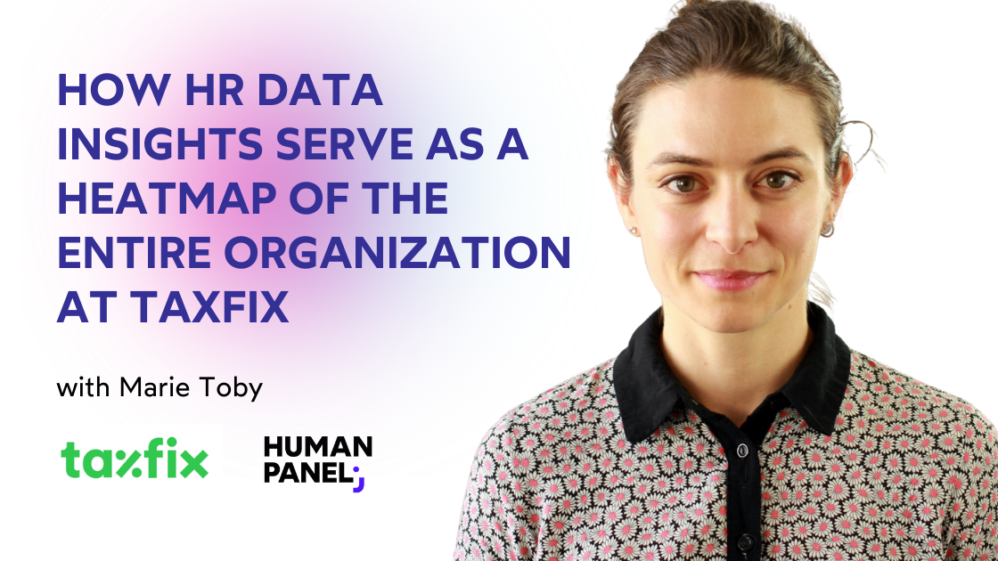10 tips to help you hire the right employee

How do you hire the right person for the job? A candidate seems good, the references seem fine, so you make an offer. But a few weeks later, the new employee falls short of the expectations and you hear whispers in your ear: Where did I make a mistake?
Well, maybe you didn‘t. And if you did, don‘t worry – even the giants aren’t always right. There’s an urban legend that HR managers at Google used to ask job applicants the following question during interviews: “Why do avocados have such a big pit?” They had done it until researchers proved that there was no point in asking that question. It never contributed to hiring the right person.
Hire talent
Hiring talent is the biggest concern of C-level executives today. Surveys show that the unavailability of talent and skills is seen by CEOs as the biggest threat to business. The truth is, companies have never hired as many people as they do today, and it’s never been more expensive. The average cost of hiring in the United States is $4,129 per job. And often enough, employers don’t know if the employee will perform as expected.
What can you do to make better, smarter hires and eliminate the risk of hiring someone who just “looks good”?
1. Don’t rely only on external candidates
Internal job boards gained popularity during the dot-com boom of the late 1990s, as companies sought to reduce turnover and encourage employees to stay with them. The 2007 recession reversed that trend. People weren’t quitting and managers started preventing their subordinates from moving up internally. If they needed a candidate, they preferred to look outside.
Today, only about 28% of companies admit that internal candidates are an important source for filling open positions. “This doesn’t mean that outside hiring is completely wrong. Sometimes, a company needs that fresh energy for the team – they want to bring in someone with a different perspective. I was hired that way once, and I will always remember my boss saying what a fantastic decision it was to hire someone from the outside,” said Daniel Aduszkiewicz, CEO and Co-Founder of Human Panel.

Aduszkiewicz pointed out that hiring from within the company can lead to redundant moves and trigger never-ending vacancies that managers try to avoid. “Internal promotions mean there is always a need to fill the existing position,” Daniel said.
The problem is that it can take up to three years for a new employee to achieve the desired performance. It might be wise, then, not to limit yourself to fishing for external candidates. Looking into the internal pool may bring you some interesting applicants, especially if you take a closer look at the next issue.
Do you want to know where your best candidates come from? Track the sources of best hires and screen their background? Sign up for a free demo of Human Panel HR management platform and see people analytics in action! Fill in the short form below and change the way you manage your workforce.
Ready to start people analytics with Human Panel?
2. To hire the right person, know what you expect
Is your company posting entry-level positions that require three years of experience? Be realistic in your candidate search and ask yourself: do you really need three years of experience for this position? Will someone with those qualifications work for the salary you’re offering them? This is where people analytics can help you filter out the exact data you need and give you quick access to the specific information.
“Data can support your decisions, but at the end of the day, a lot depends on the candidate’s story and attitude.”
Daniel Aduszkiewicz
“Hiring models can tell you what skills you’re looking for. They can indicate which candidate is the best fit and the best match for what you have to offer. But of course, you need a human factor in every decision. In the end, you need to meet the candidate in person or arrange a call and look them in the eye,” said Daniel Aduszkiewicz.
3. Know where the top performers are coming from
Have you ever tracked which channel brought you the best candidates? Where are they coming from and what is their background? Most companies don’t, but there is one well-known exception: the Indian automaker Tata Motors. They track which university their best candidates graduated from and how much they cost.
“If you know where your top performers are coming from in terms of industries, competitors, and universities, you can narrow down your search. This way, data can easily save you money.”
Daniel Aduszkiewicz
Use data to see and understand what makes people successful in their position. Is it their education and experience from previous companies? Or maybe it’s their personality? Data will help you analyze your candidate’s background, but don’t forget to stay alert to what’s going on around you. Maybe another company in the neighboring region just collapsed and released a huge pool of talent? This pool can be your workforce.
See the sources of your best candidates with Human Panel! Sign up for a free demo and see how people analytics can help you manage recruitment.
Ready to start people analytics with Human Panel?
4. Don’t plunge into phantom jobs
Do all the job listings on your company’s website really exist? It won’t be a surprise if they don’t. Employers often tend to fish for candidates and collect possible hires. They may think that they’ll see if there’s someone great out there, and if so, they’ll think about a job for them.
“You see that especially in regions and industries with an employee market. When employees can pick and choose where they want to work, companies try to have a constant pipeline of people and positions. This can sometimes be smart because it gives the impression that an employer has a bank of people lining up for the job,” Daniel Aduszkiewicz said.
However, be careful with this practice, as it can spoil the market. Phantom vacancies make the market seem tighter than it actually is and can be frustrating for job seekers.
5. Don’t turn down boomerang employees
You regret it when an excellent employee leaves your company, but what if the grass wasn’t greener on the other side and they come knocking on your door again after a few years? Should you rehire such a person? In the past, such behavior was considered disloyal, but today the average employee has 12 different jobs over the course of their career, and boomerangs shouldn’t be rejected outright.
The key is to understand why they left. Maybe they had a very poorly performing manager? Maybe they had to commute two hours to work and couldn’t maintain a work-life balance?
“I see no reason why boomerangs shouldn’t be considered viable candidates. Perhaps they should be validated more carefully, and preferably with data, not our memory. Memory is not always a good guide when making business decisions,” Daniel commented.

6. Review your interviews
As mentioned earlier, Google used to ask its candidates why the avocado pit was so huge*. Another popular question among employers was “What would you take to a desert island?**”. But are these questions really useful? In terms of building the organization – they are not.
Glassdoor’s research found that since 2009, the amount of time employers spend on job interviews has nearly doubled. Interviews are definitely the most difficult part of the hiring process. But the questions should lead to assessing whether a candidate is right for the job, not just be a fun example to add to an HR presentation.
“There’s been some research on questions like ‘how many balls can you fit in this room’ and the results showed they don’t prove anything. Interviewers should stick to the questions that can predict hiring the right person – about the candidate’s background or relevant accomplishments. Your interview protocol should make sense, not fun,” Daniel Aduszkiewicz said.
7. Test skills
People who come in for interviews are never 100% honest about their skills or interests. So how can you find out the truth about them? The answer is: test them. Google, for example, does this with a game that resembles real work. Marriott has done the same: their “My Marriott Hotel” game gives job seekers a sense of what’s expected of them, so those who don’t fit don’t apply.
“When you test people through a standardized hiring process, you can compare candidates and their performance. But that works mostly with engineers, designers, people whose skills can be evaluated objectively. On the other hand, when selecting a product manager, it is always advisable to have a conversation and give a home assignment to compare the options. You can also use people analytics to compare the candidate’s results with the desired outcome. Maybe you want someone with a score of 95%, or maybe 75-80% is just right? But of course, don’t get stuck in the experimentation bubble – to really judge someone’s performance, you need to see them in action, working with the team.”
8. Calculate your costs
Imagine a CEO asking the sales team how the new product is selling, and the answer is “we have the numbers, but we don’t know if it’s selling better or worse than the previous one”. The same is true at HR: only about one-third of U.S. companies monitor whether their processes result in hiring good employees, and even fewer calculate the cost and time of hiring.
“You should definitely do the math: how much you spent, how much the recruiter cost you, how long it took you to fill the job, or what the alternative job costs were. This calculation will help you see what part of the recruitment process you can optimize,” said Daniel.
Calculate cost per hire, costs of vacancies, and total costs of filling the vacant positions with Human Panel. Sign up for our free and non-binding demo and see people analytics in action!
Ready to start people analytics with Human Panel?
9. Consider why people leave
One of the reasons why hiring has become so difficult is the problem of employee retention. Data from the US shows that 95% of hires are made to fill existing positions. Most people leave their jobs because of the salary – but it’s wise to gather more insights about the people who leave your company.
The best way to do this is through exit interviews. That said, if you have a company with 10,000 employees, you certainly won’t have time to have an hour-long conversation with everyone who leaves. However, you can collect data through questionnaires and analyze the responses to see the reasons why people leave in a particular team or department.

Also, the data will help you predict who is likely to leave. Salary isn’t always the only reason; often people turn over because they couldn’t perform well in a particular team or position.
“That doesn’t mean you can stop people from leaving. But learning why people quit helps you make better decisions. Personally, I think not doing this is the biggest mistake companies make, and it doesn’t take much work. A good HR system and a simple analysis will give you the answers you need,” said Daniel.
10. Be the change
If a great company has a process that works, it will certainly be less eager to challenge and change it. Change always creates a certain amount of chaos and ripples. You can have a very well-functioning recruiting pipeline, you always fill positions on time, and you’re happy with employee performance. But when hiring, you shouldn’t rely only on your “gut feeling”, you should support your decisions with data and know the costs. And data here is just icing on the cake – it’s something you already have. All you need is to standardize it.
Remember – hiring from the inside, knowing what to expect, knowing where the candidates are coming from, no phantom jobs, hiring boomerangs, reviewing your interviews, testing skills, calculating costs, and reconsidering the turnover reasons –you already have all those tools in your kit. Don’t miss the forest for the trees, as the ultimate goal is to make the best possible hires.
*The avocado produced a huge seed because it was eaten by giant mammals 10,000 years ago. Such a phenomenon is called evolutionary anachronism.
**A trusted source says that the only acceptable answer to this question was “a speedboat with a tank full of gasoline.”




